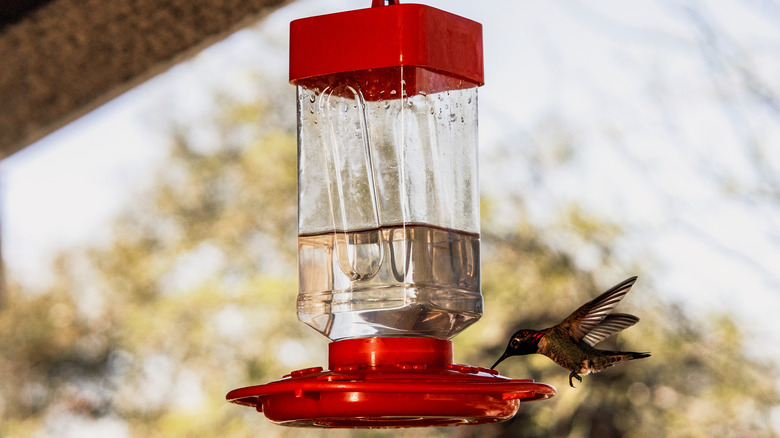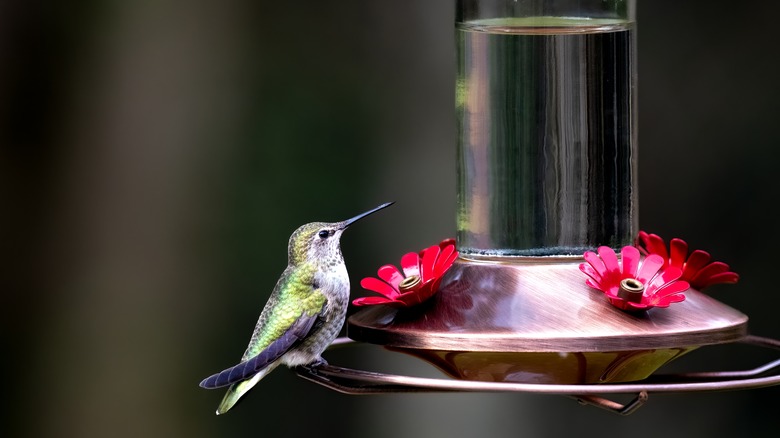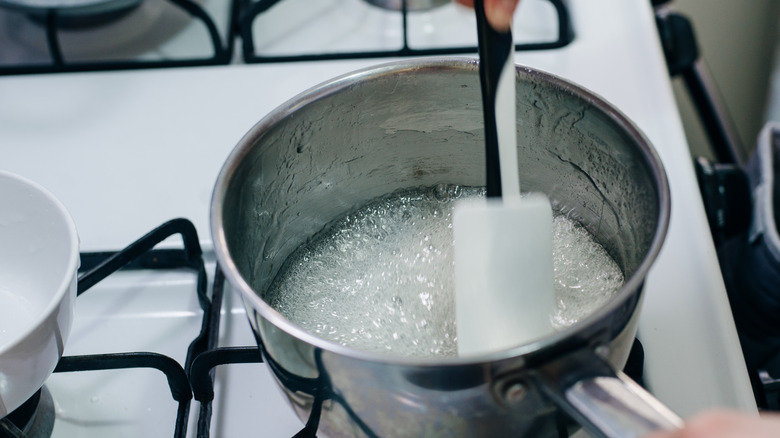It's A Bad Idea To Use Brown Sugar In Your Hummingbird Feeder. Here's Why
Nectar is essential to a hummingbird's diet. It's primarily sourced from vibrant, brightly-colored flowers and occasionally from hummingbird feeders. While you can buy hummingbird nectar in the store, making it at home is the best way to provide it. However, brown sugar should never be used to make hummingbird nectar. The ingredient in brown sugar that lends its distinct color can be detrimental and even fatal to hummingbirds.
Hummingbirds are highly sensitive to unnatural ingredients or those not found in their natural diets. The only safe ingredients for making hummingbird nectar are white sugar and water. White sugar lacks the main ingredient used to make brown sugar, molasses. Even though humans often use sweeteners interchangeably, brown sugar hasn't gone through the same purifying process as white sugar, making it toxic to these delicate birds. Brown sugar, honey, raw sugars, turbinado, artificial sweeteners, and confectioner's sugar contain additional harmful ingredients. While brown sugar can almost be used interchangeably with other sweeteners for humans, it can pose significant risks to hummingbirds' health. These sweeteners can be deadly and should be avoided at all costs.
Why is brown sugar bad for hummingbirds?
Brown sugar may not seem like a big deal, but for these little birds, it is. Molasses in brown sugar is high in iron. Iron is incredibly toxic for these 3-inch birds and can kill them even in trace amounts. While iron is crucial for various biological processes, especially for humans and other animals, it's incredibly damaging to hummingbirds. Hummingbirds accumulate, rather than excrete iron, from their bodies. This excess iron accumulates in the liver and can lead to organ failure and premature death.
While honey is a natural sweetener from bees, it can be deadly to birds. When mixed with water, honey ferments and can cause harmful bacteria and fungi to grow. It can also serve as a breeding ground for pathogens. Honey that ferments can produce botulism. Avian botulism is fatal to all bird species, including hummingbirds. Other sweeteners you shouldn't use, like raw sugar and turbinado, still contain small amounts of molasses and iron. Artificial sweeteners also tend to have ingredients that hummingbirds cannot digest, which can also have toxic effects on them. In addition, confectioner's sugar — known as powdered sugar — also contains additional ingredients like cornstarch, which can harm the birds.
Using white sugar in hummingbird feeders
When making hummingbird nectar, do not include brown sugar, sweeteners other than white sugar, or red dye. Although hummingbirds are attracted to the color red, adding artificial colors is unnecessary and can be harmful. The chemicals present in red dye can lead to disease and death. Hummingbird feeders are made with all the bright colors necessary to attract them, so the red dye is not needed.
Using white sugar in your hummingbird nectar mimics the natural composition of their food source in the wild. You can make your own hummingbird food with just two ingredients: white sugar and water. Be sure to replace the nectar and clean your feeders at least twice a week when it's hot outside and once when it's cooler. Regular cleaning and changing nectar in feeders can help minimize the risk of other diseases. This homemade white sugar-only nectar solution provides hummingbirds with a concentrated energy source to sustain their high energy levels and metabolic rates. When you make your hummingbird nectar this spring, be sure to use only white sugar and steer clear of brown sugar, honey, and other sweeteners.


